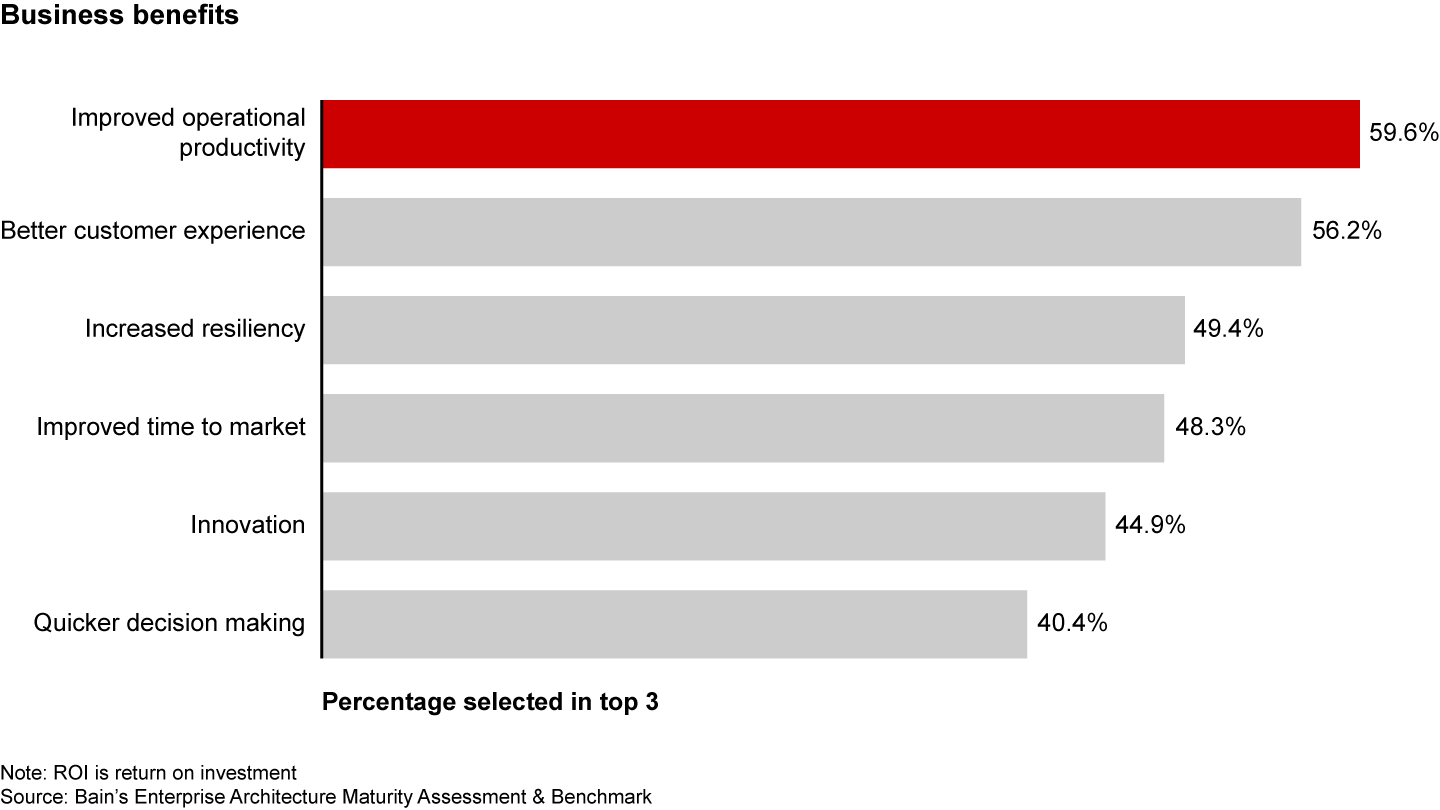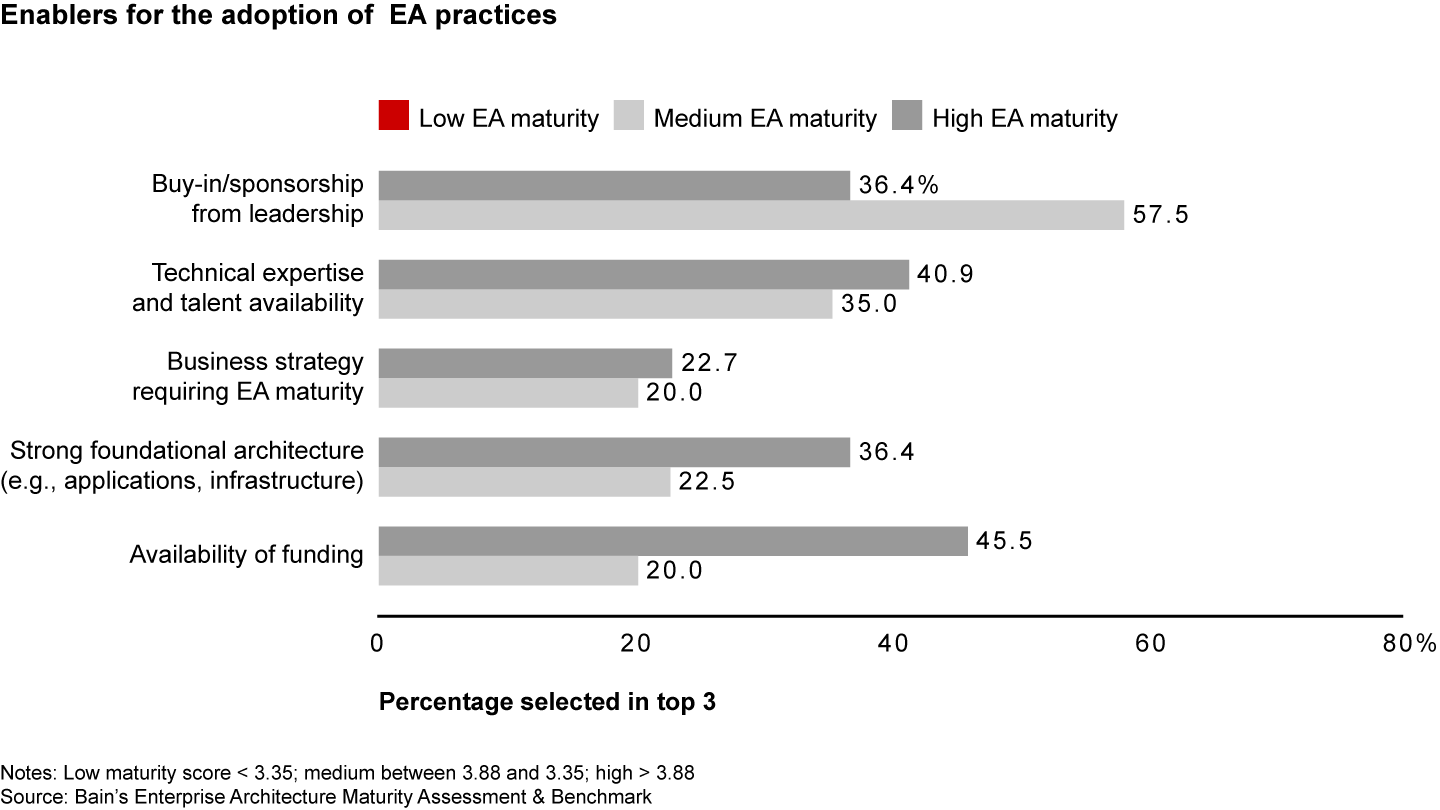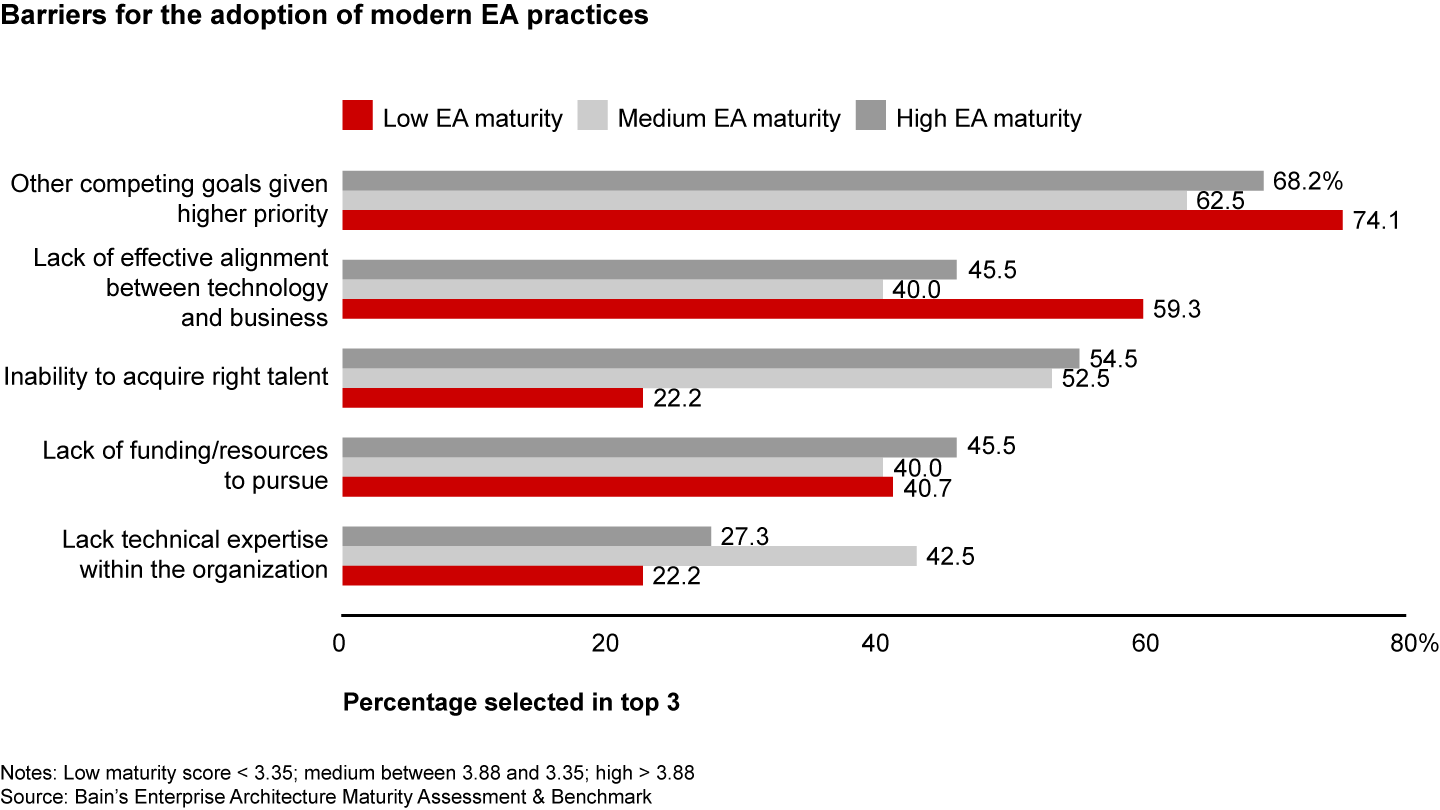Brief
 }
}
At a Glance
- Companies with modern enterprise architecture practices have higher operational productivity and are better at business transformation.
- Most companies, however, are not satisfied with the role that enterprise architecture plays within their organization. Satisfaction runs higher in companies that adopt a distributed rather than centralized model, embedding architects within product teams.
- Working on the front lines gives architects a better view of how technology and the company are evolving and makes it easier to adapt the architecture to emerging customer behaviors and technology trends.
Enterprise architects design the plans that align a company’s business strategy with its technology. This architecture describes how the organization’s complex applications, data, and infrastructure will enable success. But the role is changing: In the past, architects sat outside the delivery teams, advising from a remote position. Today, architects are an integral part of the team, giving direction in real time.
The change comes as the product model has risen, and as more companies use Agile methodologies to develop and run the business. Some teams now believe that the architecture function is less vital as the company scales its Agile ways of working. Some think that the product teams themselves will be able to manage any modernization necessary.
But the opposite is true: The rise of Agile and product-led development makes enterprise architecture more important than ever. And including architects on those Agile teams makes their guidance more valuable.
Architecture provides the guardrails that all the autonomous Agile teams work within. It describes the ways that products and systems can work together (see Figure 1). Without good architecture, there’s no way to orchestrate the cross-channel, cross-department capabilities that a successful product model depends on. For example, with so many digital channels exposing greater functionality, it’s more important than ever to align to a target architecture that helps reduce time to market, manage costs, and create a seamless, omnichannel customer experience.




Modern enterprise architecture ensures modularity and flexibility that are essential as the pace of technological change speeds up. But despite its critical importance, Bain’s research finds that only 1 in 10 executives surveyed were satisfied with the way their company manages its enterprise architecture.
Satisfaction is greater in companies where the architects are less remote and more engaged with the teams developing internal and external products. Leading companies embed architects in teams that are delivery oriented, so that they can quickly see where the architecture is facilitating results and where improvements would help. Working on the front lines gives them a better view in real time of how technology and the company are evolving and makes it easier to adapt the architecture to emerging customer behaviors and technology trends.
For many companies and architects, this will require new capabilities that are both broad and deep. Executives identified technical expertise as a top enabler of enterprise architecture adoption in a recent Bain survey (see Figure 2). Talented architects, who have the skills to define and deploy enterprise architecture, also need be able to work closely with Agile teams.




Why enterprise architecture matters
What happens if you don’t have a strong enterprise architecture in place as you scale Agile?
Without a strong guiding architecture, business goals such as time to market and good customer experience can suffer. Companies with weak architecture struggle to orchestrate strategic initiatives, whether business or technology. This often leads to the creation of program teams to coordinate across multiple Agile teams—which increases cost, creates dependencies, and causes delays.
It also makes it harder to align new developments in technology, creating duplicate efforts, poor integration, technical debt, and slow progress in modernizing platforms. For example, one multichannel retailer with semiautonomous product development teams saw its mobile and web teams each develop its own shopping basket, making it difficult to produce a seamless shopping experience across channels for buyers.
What went wrong? A lack of architectural governance meant there were no barriers to guard against the teams’ developing their own baskets. Because architects were not working close to the teams, no cross-team communication alerted the architects that this was happening. Without an orchestrating role, enterprise architects weren’t able to coordinate development—which in this case could have meant asking product owners to wait until an integrated basket could be delivered.
By contrast, companies with a flexible, modular enterprise architecture are more successful with their large transformation programs, improved operational productivity, and better customer experience. For example, a large provider of capital market infrastructure relied on enterprise architecture to help shape a business and technology strategy for data and analytics, a rapidly growing service in that industry. The company also used enterprise architecture to overcome silos by aligning language across multiple entities. This enabled new business opportunities that none of the individual entities would have been able to capture alone, and generated significant new revenue and efficiency gains.
What leaders do differently
Companies generate more value from technology when they view enterprise architecture as a center of excellence, advising and supporting teams across the organization as they scale Agile. This model allows enterprise architects to work more closely with teams, embedded in their delivery and decision-making processes.
Most companies are somewhere along their journey from viewing enterprise architecture as a centralized function, where architects work on a central team, to viewing it as a center of excellence, where architects work within business teams (see Figure 3).


Making this shift starts with a clear assessment of what the company will need in the future. In some cases, existing enterprise architects will need to learn new skills to work more effectively with Agile teams. In most companies some new talent will also be required. Our survey respondents cited an inability to find the right talent as a top barrier to adopting modern enterprise architecture practices.
Our experience with companies across industries helps identify three traits that successful enterprise architecture organizations show today:
- A hybrid structure. Successful enterprise architecture functions tend to combine a small, central enterprise architecture team that focuses on strategic priorities, portfolio decisions, and framing value streams, with a decentralized cadre that works closely with the business and Agile teams on delivery.
- Lean governance. Simple decision-making processes, a limited set of committees, and clear guidance to teams helps reduce the administrative overhead of architecture.
- Community support. Building up a community of enterprise architecture enables cocreation and sharing of information. Encouraging broad use of data and architecture tools through simplified language and learning support can also help spread the capability across the organization.
As businesses strive to become more digital and operate at higher speed and with greater agility, senior leaders shouldn’t wait to transform their enterprise architecture capabilities. Updating the way enterprise architects work with teams is the foundational component to modernizing the tech stack and the people who manage it.